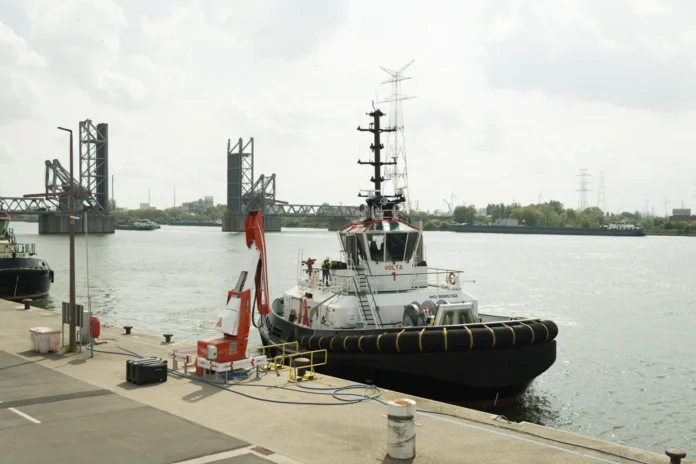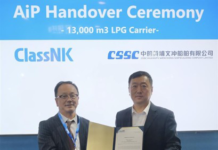
Port of Antwerp-Bruges has announced the launch of Volta 1, Europe’s first fully electric tugboat, which was developed in cooperation with Damen and follows previous world firsts such as the Hydrotug (hydrogen-driven) and the Methatug (methanol-driven).
The Volta 1 is a Reversed Stern Drive (RSD) tugboat designed on a double bow principle and equipped with a patented Twin Fin skeg for optimal stability and manoeuvrability. Therefore, it can be used flexibly as a front and back tugboat.
With its battery capacity of 2,782 MWh, recharged in as little as two hours via a powerful 1.5 MW charging station, the Volta 1 is completely emission-free and can cruise for up to 12 hours. Its towing power of 70 tons guarantees the same performance as a traditional diesel tug boat.
The Volta 1 is part of a broader renewal of the tug-boat fleet, together with five energy-efficient RSD tugs. The tug service, responsible for nearly 85% of port-related CO₂ emissions, is thus undergoing a profound greening. Port of Antwerp-Bruges systematically strives to integrate the most environmentally friendly technologies, as part of its ambition to be climate neutral by 2050.
As the fifth-largest bunker port in the world, Port of Antwerp-Bruges also aims to become a full-fledged multi-fuel port. It therefore wants to offer low-carbon alternatives in addition to bio- and conventional fuels. Over the past year and a half, the Belgian port introduced the world’s first hydrogen and methanol-powered tugs. By testing these technologies side by side in the field, Port of Antwerp-Bruges can determine which solution scores best in terms of emissions, cost, autonomy and performance.
Damen, which built the world’s first electric tugboat in 2022 in Auckland, New Zealand, began construction of the six RSD tugs for Port of Antwerp-Bruges in 2023 in Vietnam.
After a journey of more than 10,000 kilometres, the ships arrived in Antwerp in November 2024. There, they were prepared for operational deployment, including a technical start-up, crew training and installation of charging infrastructure.






